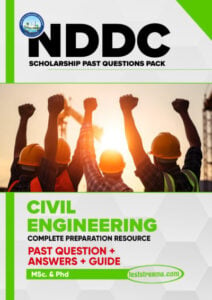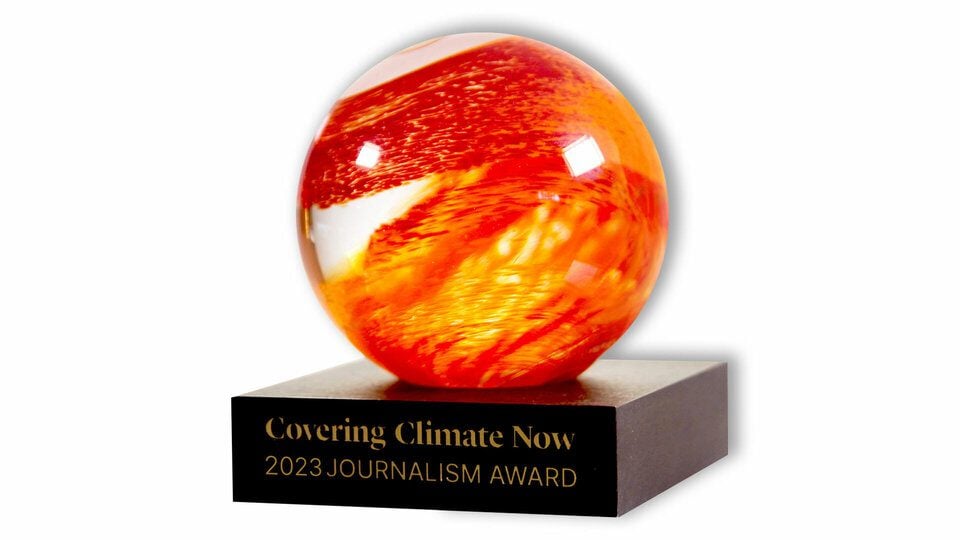NDDC Scholarship Civil Engineering Test Past Questions and Answers[free Download]
Calling all Civil Engineering enthusiasts! Are you dreaming of advancing your education and building a remarkable career in the field of Civil Engineering? The NDDC Scholarship is your gateway to success! To help you pave the way to triumph, we have curated a comprehensive guide featuring NDDC Scholarship Civil Engineering Test past questions and expert answers. Let’s embark on this rewarding journey together and unlock the doors to academic excellence! NDDC Scholarship Civil Engineering past questions offer invaluable insights into the exam’s structure, question types, and subject areas that you are likely to encounter in the real test. By familiarizing yourself with these past questions, you can tailor your preparation to focus on the most relevant topics, effectively manage your time, and gain the confidence needed to excel in the examination.
With our Past Questions and Answers, you can sharpen your problem-solving skills, enhance your understanding of critical concepts, and build confidence in tackling even the most challenging questions. Practicing with real past exam papers is the best way to simulate the actual test environment. This is your stepping stone towards achieving your dreams and creating a lasting impact on society.
What Makes Our NDDC Scholarship Past Questions Stand Out?
- Comprehensive Coverage: Our collection spans multiple years, ensuring that you’re well-prepared for any surprises the exam might throw your way.
- Detailed Answers: Each question is accompanied by a comprehensive answer guide, allowing you to learn from your mistakes and reinforce your knowledge.
- Exam-Relevant Content: Our team of experts has painstakingly compiled the most relevant topics and questions that align with the NDDC Scholarship exam syllabus.
About NDDC Scholarship Test Style and Format (Updated)
NDDC overseas scholarship test was conducted by Cinfores-Ltd, between 2010 and 2015. Since 2016, the tests are now conducted by MEIL (MARG Educational International Limited).
The test usually comprises of 2 sections –
1. General questions which everyone will have to sit, and
2. Discipline-based questions.
For example, candidates in Engineering and Science related disciplines could take a mix of science-based questions like maths, English, physics, and chemistry for part 1, then discipline-specific questions for part 2.
2016 and 2017 tests contained more discipline-specific tests and English language tests as general papers. The test usually lasts between 30 to 60 minutes.
Sample Past Questions for NDDC Scholarship Aptitude Test – for Civil Engineering candidates
1. Stones are obtained from rocks that are made up of:
A) Ores
B) Minerals
C) Chemical compounds
D) Crystals
Answer: b
Explanation: Rocks are made up of minerals. They can be monomineralic (single mineral) or polymineralic (more than one mineral).
2. Which process comes alter batching in manufacture process?
A) Transportation
B) Placing
C) Mixing
D) Compacting
Answer: c
Explanation: Batching involves measuring the amount of raw materials required for manufacture of concrete. The next step is to mix all these ingredients together.
3. The computer-aided design (CAD) hardware doesn’t include.
A) Graphic display terminals
B) Computer
C) Computer programmes
D) Keyboard
Answer: c
Explanation: CAD has both hardware and software components. The hardware components are option a, band d. The software components include all computer programmes that implement computer graphics.
4. How many types of CAD are there?
A) 6
B) 4
C) 2
D) 5
Answer: d
Explanation: The live types are 2D CAD (flat drawings of product), 2.5D CAD (Prismatic models), 3D CAD (3D objects), 3D wirelrame and surface modelling (skeleton like inner structure) and solid modelling (solid geometry).
5.Modem CAD systems are based on:
A) ICG
B) GCI
C) GIF
D) IFG
Answer: a
Explanation: ICG is interactive computer graphics. It denotes a user-oriented system in which computer is used to create, transform and display data in pictoral or symbolic forms.
6.How many groups are there in IS codes for Civil Engineering?
A) 41
B) 52
C) 62
D) 35
Answer: a
Explanation: There are 41 groups or categories of IS codes available for Civil Engineering. Some of them include hardware, stone, ports and harbour, cement and concrete, lire safety, etc.
7Which is the latest version of AutoCAD software?
A) 2016
B) 2017
C) 2018
D) 2019
Answer: c
Explanation: AutoCAD 2018 is the latest version. It has improved save performance, improved 2D Graphics, 3D navigation performance, AutoCAD mobile app and updated DWG file format.
8.Which key is used to obtain properties palette in AutoCAD?
A) Control+1
B) Control+2
C) Control+3
D) Control+4
Answer: a
Explanation: Control+2 gives design centre palette, control+3 gives tools palette. Control+4 is not an option.
9. Disaster management deals with situation that occur alter disaster.
A) True
B) False
Answer: b
Explanation: Disaster management is a broad term and it deals with situation prior to, during and alter the occurrence of a disaster.
10.How many elements of disaster management are there?
A) 8
B} 7
C} 4
D) 6
Answer: d
Explanation: There are six distinct sets of activities. These include risk management, loss management, control of events, equity of assistance, resource management and impact reduction.
11 The term ‘Sullage’ refers to:
A) Fresh wastewater
B) Septic wastewater
C) Wastewater from kitchen, laundry
D) Toxic wastewater
Answer: c
Explanation: The domestic wastewater generated from household laundry, preparation of food, cleaning of utensils and personal washing is called sullage.
12.How many types of weirs are there based on shape of crest?
A) 6
B) 4
C) 5
D) 3
Answer: b
Explanation: The lour types are sharp-crested, broad-crested, narrow-crested and ogee-shaped
weir.
13. weir comprises several designs into one structure.
A) All-in-one
B) Open
C) Mixed
D) Compound
Answer: d
Explanation: Compound weirs are commonly seen in locations where a river has multiple users who may need to bypass the structure. Common design includes a broad-crested weir.
14. Wastewater can become septic by the loss of:
A) Dissolved oxygen content
B) Carbon content
C) Organic compounds
D) Water content
Answer: a
Explanation: In conditions of warm weather, the dissolved oxygen content of the wastewater loses and it becomes septic. It has an offensive odour of hydrogen sulphide.
15. The extent of water treatment depends on how many factors?
A) 5
B) 2
C) 3
D) 4
Answer: b
Explanation: The extent of treatment depends on 2 factors- the quality of water (depends on the source) and the beneficial uses (high quality for domestic, production sector, low quality for housekeeping, a germ free for recreational and for agricultural purposes having low TDS, Na ratio, etc.).
16.How many maior sources of solid waste are there based on their origin?
A) 10
B) 5
C) 9
D) 6
Answer: c
Explanation: There are broadly 9 sources of solid waste. They are residential, industrial, commercial, institutional, construction & demolition areas, municipal services, treatment plants, agriculture and biomedical.
17.Which of the below is not an idea behind solid waste management?
A) Control of waste generation
B) Storage and collection
C) Disposal
D) Stop waste generation
Answer: d
Explanation: The generation of solid waste cannot be stopped. The idea behind solid waste management is to reduce and eliminate the adverse effects of these on the environment and human health.
18.The number of functional components of solid waste management are:
A) 5
B) 3
C) 6
D) 4
Answer: c
Explanation: The six functional components in order are waste generation (identification of waste), onsite handling & storage (at site of waste), waste collection (collecting from different sources), waste transfer (local to regional site), waste processing (sorting of reusable/recyclable) and disposal (at landfills/waste to energy).
19.The term ISWM refers to:
A) International Solid Waste Management
B) Integrated Solid Waste Management
C) Integrated Solid Waste Machine
D) International Solid Waste Meehanism
Answer: b
Explanation: It stands for Integrated Solid Waste Management. It refers to the selection and use of appropriate techniques for the disposal of solid waste.
20.Carbon footprint can be measured by:
A) Carbon dating
B) Instruments
C) Carbon accounting
D) Formula
Answer: c
Explanation: Carbon footprint is the total set of greenhouse gas emissions caused by an individual, event, organisation or product. It is expressed as carbon dioxide equivalent. It can be measured by assessment of GHG (greenhouse gas) levels or activities like carbon accounting.





